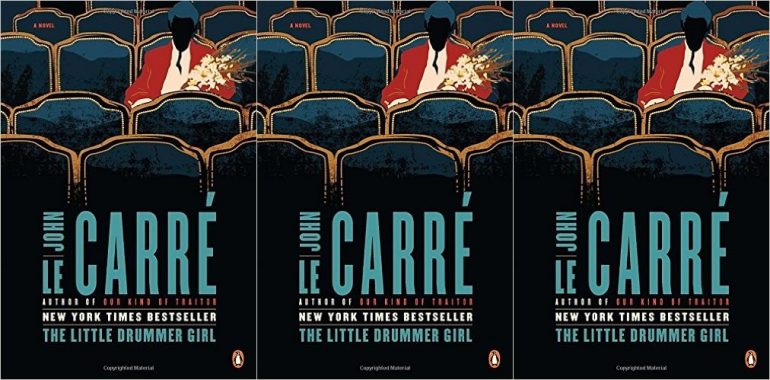Is Life Imitating John le Carré’s The Little Drummer Girl?

The bomb that rattles the quiet West German suburb of Bonn went off before the start of The Little Drummer Girl. The first pages of John le Carré’s 1983 novel are filled with questions, the what-if post mortems that happen whenever the rhythm of everyday life is broken by a terrorist with a gun and a grudge. Teams of investigators are questioning a shell-shocked Israeli attaché about the supposedly Swedish woman who handed him the suitcase with the bomb that blew up his home, maimed his wife and murdered his young son. In contemporary life, it’s a familiar tableau.
But from here the story veers off into an engaging web of intrigue—it’s a spy novel, after all. In no particular order, the story aims to find the mastermind behind the bombing, follow the workings inside an Israeli sleeper cell, and wonder about the precarious position and mental state of a small-time actress named Charlie who is recruited by a handsome Israeli operative on the beach in Mykonos (all the best spy novels spend some time under the Grecian sun) to use her acting skills and sympathy for the Palestinians to infiltrate their ranks.
Navigating through the hairpin twists and turns in le Carré novels is always fun and almost always challenging. In his Cold War novels, such as Tinker Tailor Soldier Spy, the plot is a subtle game of cat and mouse. The Little Drummer Girl was a change of pace for le Carré. He moved the action away from the Soviets and the Eastern Bloc to the terrorist guerrilla warfare we now know too well. The Cold War thrillers operate behind the scenes of ordinary life, while this novel takes place in what could be your own backyard. Never mind those spy vs. spy novels set in a back alley in Moscow; this is what’s happening now, and if you, ordinary civilian reader, ever find yourself in the wrong place at the wrong time, it could happen to you.
Contemporary life tells stories in short bursts: one-hundred-forty-character tweets, short blog posts and fifteen-second YouTube commercials. In 1983, le Carré had no such need to get to the point. There is a lot going on in The Little Drummer Girl, but the focus is on the details surrounding the mayhem rather than the mayhem itself. The novel builds one layer of life on top of another, building to a point where Charlie herself struggles to wonder what is real and what has been carefully constructed as a cover by her Israeli handlers. This novel is a journey, not a destination. Like the heroine, readers may be unsure where the story is headed, or even who the bad guys really are.
One of the comforts of The Little Drummer Girl is that it takes place in a just distant enough, internet-free past to make the story feel almost quaint. The real-life international political intrigue Rachel Maddow walks viewers through nightly is decades away. The story begins in Bonn, then the capital of West Germany, when the Berlin Wall divided the country into a democratic West and a communist East. That wall came down in 1989, in what seems like another lifetime.
Everything in le Carré’s novels seemed so extreme. Could there be a mole in the British intelligence that was funneling information via a safe house to Russian operatives in Romania? Surely not. But could there be an actress posing as a Palestinian bomber backed by an Israeli spy network that has created layers of reality for her, including a virtual biography down to where she slept and what she wore? How could there be when it sounds so contrived.
Re-reading le Carré in 2017, a reader may find the complicated tangle of events seems almost entirely likely. Convoluted plots are no longer the exclusive property of spy novels and international thrillers. Almost every day, one shocking coincidence after another is revealed in short random bursts on Twitter and elsewhere. When they are added together, they tie lots of people together in what seems like an extraordinarily complex set-up. Political pundits spend hours on TV and hundreds of column inches exploring unusual meetings in strange places; billion dollar highways to nowhere in the Middle East funded by Western investors with ties to questionable syndicates; foreign governments funneling money to pointless building projects as a way to launder money. Could this all be part of a plot to hack an election and install a preferred candidate? At times it feels like a clear case of life imitating le Carré.
The thing that makes le Carré’s fiction preferable is that, first of all, it’s fiction—no actual citizens have been harmed in the creation of the novel, and second, the storytelling unfolds well-written and in great detail instead of one-hundred-forty-character declarative sentences. That definitely counts for something.
